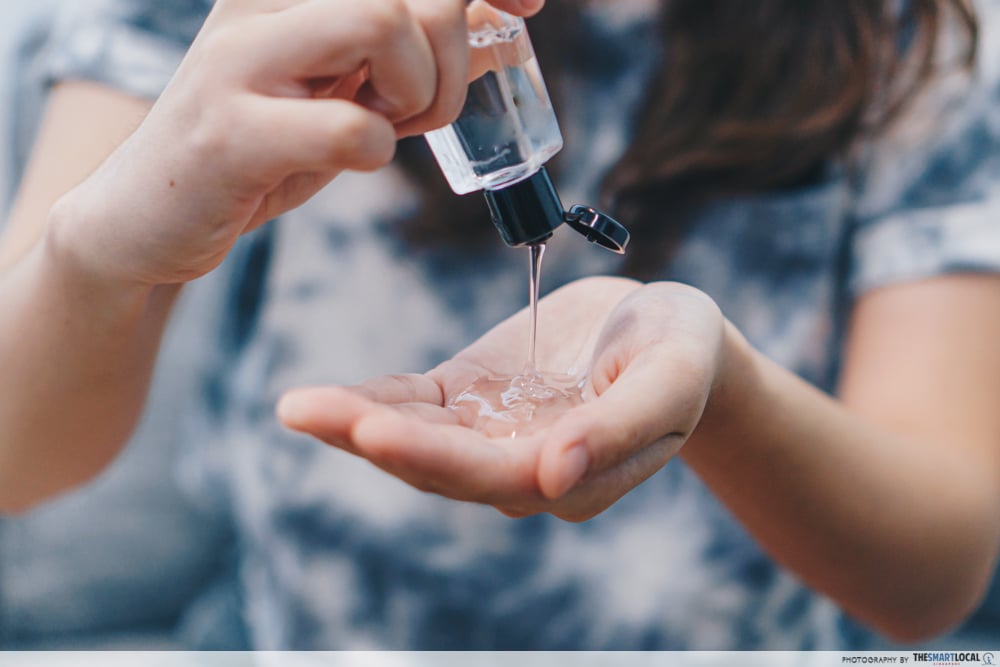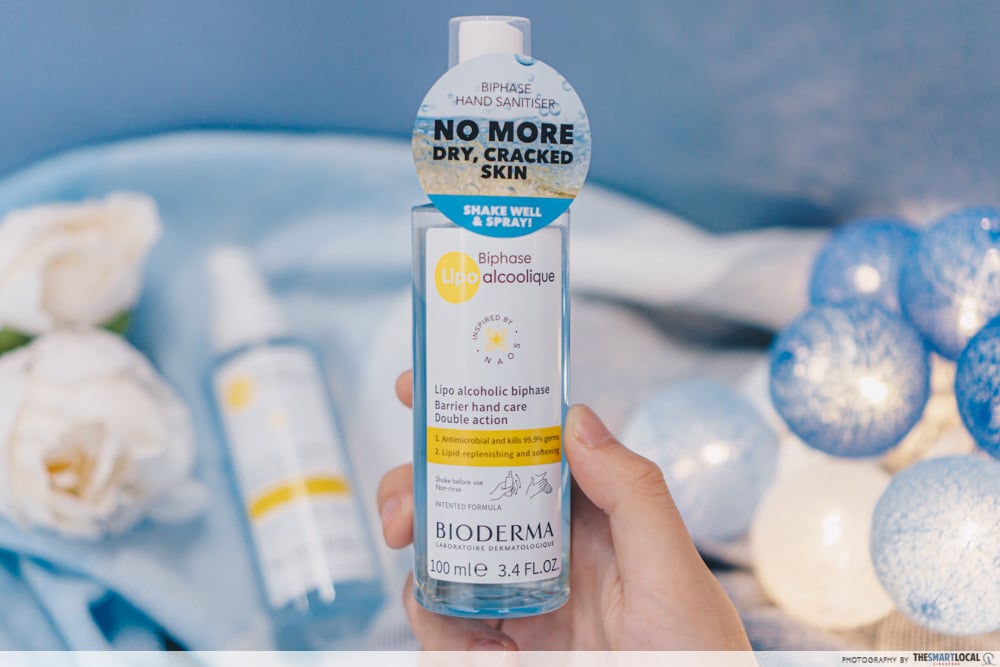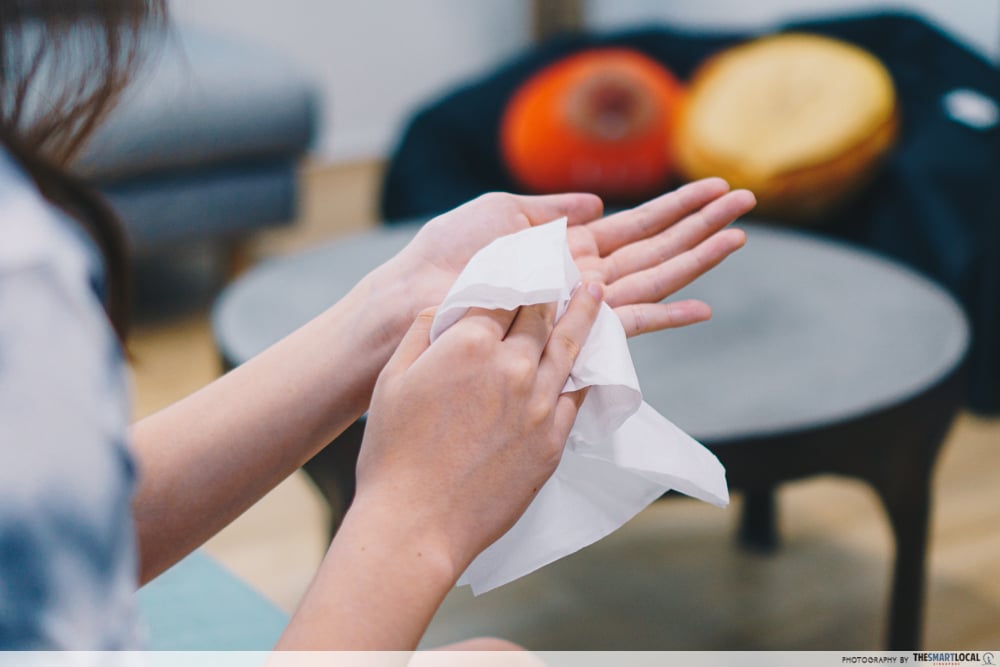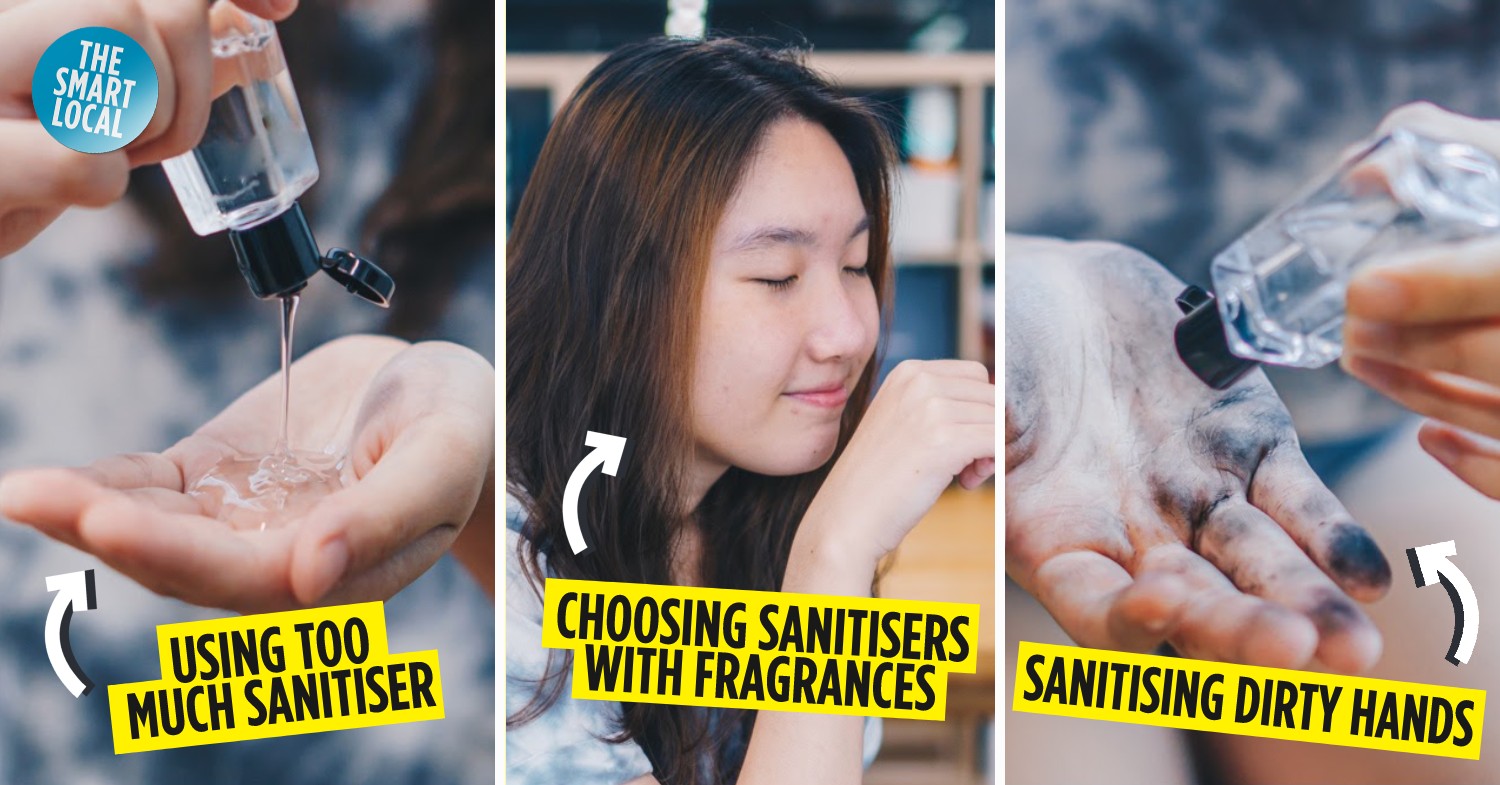Hand sanitiser mistakes
Face masks aside, another essential that we arm ourselves with religiously every time we go out nowadays is a bottle of hand sanitiser. However, the more we sanitise our hands, the drier and more cracked they become.
If you’re constantly torn between germ-busting and saving yourself from the pain that comes with lathering alcoholic sanitiser on chapped skin, you might be guilty of one or more of these seven hand sanitiser mistakes.
1. Sanitising too often or using too much sanitiser at once

You may think that rapidly depleting your stash of hand sanitisers is a sign that your hands are being kept in tip-top bacteria-free condition. However, too much of anything can be bad, and likewise, excessive use of sanitisers can adversely cause your hands to become dry.
The explanation behind this: effective sanitisers contain at least 60% of alcohol, which actually reduces your skin’s lipids a.k.a. natural fats that act as a protective barrier, causing your skin to dry and crack.
As a general rule of thumb, you shouldn’t sanitise your hands more than once per hour, unless the need arises, such as before handling food or after blowing your nose. Each time you sanitise, limit it to a pump or two for an optimal amount.

If you can’t help but to lather on sanitiser after touching every foreign surface, get one with a dual-action formula such as the Bioderma’s Biphase Lipo alcoolique. Its alcoholic phase kills off 99.9% of germs in 30 seconds, and works hand in hand with the shea oil and squalane lipidic phase to replenish skin lipids – so you can sanitise without worry of dehydrated skin after.
2. Sanitising while your hands are dirty

A big no-no to sanitising your hands when it is visibly dirty and greasy because dirt will hinder your skin’s absorption of the sanitiser, which essentially means you’re letting it all go to waste. You will also be spreading the dirt and grime all over your hands instead.
You should rinse and wash your hands with soap and water first, or at least wipe off the muck with tissue paper as much as you can before applying any sanitiser.
3. Using random sanitisers without checking ingredients
 Image credit: BBC
Image credit: BBC
Nope, we’re not just referring to dubious, brandless sanitisers. Some of the most common ingredients like aloe vera and glycerin found in branded sanitisers do help to moisturise and nourish your skin, but only for the short-term. Ultimately, the alcohol concentration will still remove your skin’s lipids and leave it feeling dry.
Having a healthy amount of epidermal lipids is essential to support hydration retention and maintain your skin’s firmness and elasticity. To ensure regular replenishing of skin lipids to stave off dry hands, choose one with a lipidic phase, such as Bioderma’s Biphase Lipo alcoolique. Based on our observations, it also seems to be the only one in the market that includes such properties.
4. Choosing sanitisers with fragrances

A whiff of your usual sanitiser might smell great, but you could actually be aggravating your sensitive and dry hands by choosing those with fragrance and perfume. The trade-off for a sweet-smelling sanitiser is that it breaks down collagen in your skin, irritating and hindering it from renewing itself, causing your skin to be chapped and sensitive.
Using scented sanitisers regularly will dry out your skin faster, and in more extreme cases, it could even potentially act as a trigger for conditions like dermatitis and eczema.
5. Not shaking your sanitiser well before use

Bioderma’s Biphase Lipo alcoolique, for example, requires a shake before application to even out the alcoholic phase with the lipidic phase.
Some liquid-based sanitisers that tout moisturising properties might require you to shake them before use, so that the contents within will be mixed well and evenly distributed when applied to your skin.
This ensures that when you apply the sanitiser, you’re all set to have both disinfection and nourishment take place simultaneously, giving you clean and moisturised hands for a longer period.
6. Making your own hand sanitiser
 Image credit: WGME
Image credit: WGME
If you find your sanitiser collection running low, don’t replenish it by brewing up your own concoction. While the internet is rife with easy DIY recipes, the end product of your little experiment cannot be scientifically QC-ed for its effectiveness and safety.
Being kiasu Singaporeans, we might erroneously add too much alcohol in our creations, which will only cause our skin to become dry and chapped. And if we focus too much on having a sanitiser with moisturising properties, its effectiveness in killing bacteria may be compromised.
Instead, leave it to the experts by getting a store-bought hand sanitiser that prioritises both sterilisation and nourishment.
7. Immediately wiping your hands dry after sanitising

After applying sanitiser, don’t rush to wipe your hands dry or rinse them with water. Instead, rub and spread the sanitiser evenly all over your hands and let them dry naturally so that your skin can absorb the alcohol for an effective clean. Make sure not to wave your hands around to accelerate the drying process either, because this will cause them to pick up more germs in the air.
While it’s common to feel that your hands are extra slippery after applying certain sanitisers, it’s best to rub consistently for 30 seconds to a minute for the product to fully seep in and work its wonders.
Get clean and moisturised hands with Bioderma’s Biphase Lipo alcoolique
To help you avoid even the slightest of hand sanitiser mistakes, get the Bioderma Biphase Lipo alcoolique to prevent having dry and cracked hands.

The product has a biphase function, with a 90% alcoholic phase which gives you an efficacy of killing 99.9% of germs. The 10% lipidic phase, on the other hand, contains shea oil and squalene to replenish the lipids removed by the alcohol, and the result is that you get the best of both worlds: germ-free and moisturised hands.
Make sure to shake the bottle well before applying so that you can mix the two different phases and get the optimal results. The product might feel a tad oily upon application but after 30 seconds to a minute of rubbing it into your skin, you’ll end up with a smooth, matte finish.

Personally, using the Bioderma Biophase Lipo alcoolique felt different from applying my typical gel-based hand sanitiser. The spray function of the bottle helps the sanitiser feel lighter on my skin, and there wasn’t a usual wave of sanitiser smell that hit my nose when I applied it.
From now till 30th June 2021, you can get your hands on Bioderma’s Biophase Lipo alcoolique exclusively at Watsons stores or online at just $14.90 – with in-store promotions ongoing until end May 2021. You’ll be able to find it in pharmacies and drugstores islandwide from 1st July 2021 onwards too.
The cherry on top is that 100% of the profits from the sale of this product will be donated to NGOs that fight the Covid-19 pandemic – so you’ll be giving your health better protection plus giving back to our frontline heroes.
Having a bottle of hand sanitiser with you is almost second nature since the pandemic struck, but having to deal with dry and cracked hands as a result may cause us to shy away from applying them, and even avoid sanitising children’s hands. Luckily, Biophase Lipo alcoolique is also child-safe so you can bring just one bottle out on family days.
With a dual-purpose sanitiser like the Bioderma Biophase lipo alcoolique, you can give your hands the much-needed moisturising care on top of all that sanitising.
Find out more about Bioderma’s Biophase Lipo Alcoolique here
This post was brought to you by Bioderma.
Photography by John Low.
